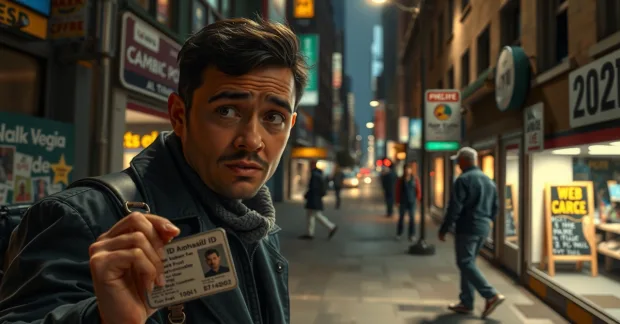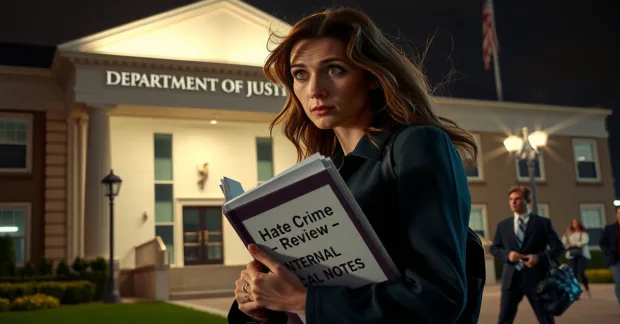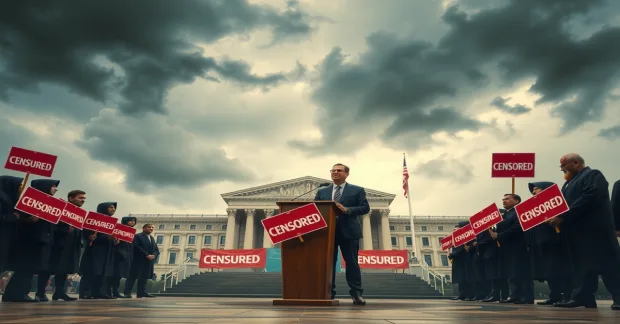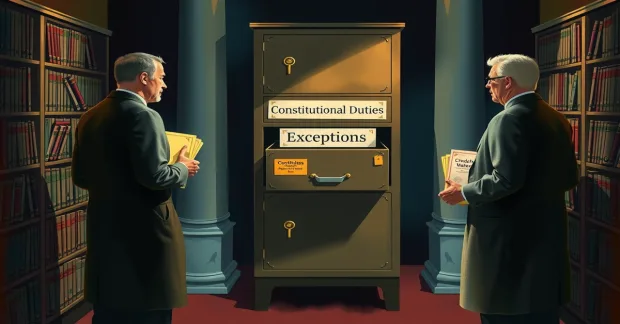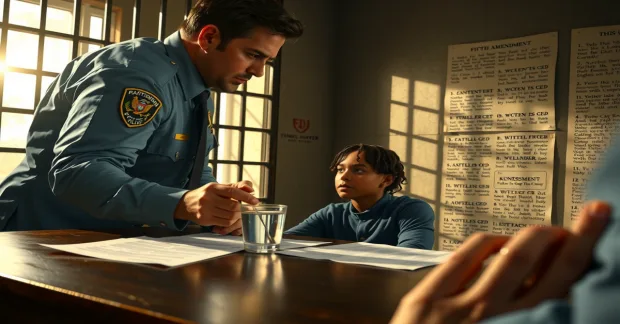
It’s a question that directly impacts your daily life and fundamental rights as an American citizen. When you consider the ongoing debate about highway protests, you’re faced with a complex intersection of constitutional rights and public safety concerns. While the First Amendment protects your right to peaceful assembly, the practice of blocking highways has sparked intense controversy due to its potential life-threatening consequences for emergency responders and motorists. Whether you’re commuting to work or responding to an emergency, this issue affects your ability to navigate public roadways safely and efficiently, making it a critical matter of both individual liberty and collective responsibility.
Key Takeaways:
- Constitutional Rights vs Public Safety: The debate centers on balancing First Amendment protections with maintaining public order and safety on highways
- Emergency Services Impact: Highway blockades can prevent emergency vehicles from reaching their destinations, potentially endangering lives
- Legal Limitations: While the right to protest is protected, the Supreme Court allows reasonable time, place, and manner restrictions on speech activities
- Public Safety Concerns: Highway protests can lead to traffic accidents, road rage incidents, and significant safety hazards for both protesters and motorists
- Economic Consequences: Blocking highways can result in substantial economic disruption, affecting commerce and daily business operations

The Complex Landscape of Protest Laws
A comprehensive understanding of protest laws in the United States of America reveals a complex web of constitutional rights, federal regulations, and state-specific legislation that shapes how you can exercise your right to protest. These laws have evolved through decades of judicial interpretation and legislative action, creating a framework that attempts to balance public safety with fundamental freedoms.
Understanding Free Speech Rights
On paper, your First Amendment rights provide robust protection for peaceful protest activities, but these rights come with significant limitations. When you plan to demonstrate, you should know that courts have consistently held that the government can impose reasonable restrictions on the time, place, and manner of protests to protect public safety and maintain order.
The Role of State and Local Laws
State and local authorities play a pivotal role in determining how you can exercise your protest rights. Many jurisdictions have enacted specific ordinances governing demonstrations, with penalties ranging from misdemeanors to felonies for highway blockades. Your local laws might require permits for large gatherings or prohibit certain protest activities entirely.
Complex interactions between federal, state, and local regulations create varying standards across different jurisdictions. You’ll find that while some states have enacted harsh penalties for highway protests, others maintain more lenient approaches, reflecting different regional priorities and values.
International Perspectives on Protest Rights
About 195 countries worldwide have different approaches to handling protest rights and public demonstrations. You’ll find that some democratic nations provide broader protections for protesters, while others impose more restrictive measures on public gatherings.
Rights frameworks in different countries offer valuable insights into alternative approaches to balancing protest rights with public order. You might notice that some European nations have established designated protest zones near highways, providing a compromise between demonstration rights and traffic flow maintenance.
Historical Context of Highway Protests
Clearly, you can trace the origins of highway protests back to the Civil Rights Movement of the 1950s and 1960s, when activists first recognized the strategic power of disrupting transportation systems. During this era, you would have witnessed how the Selma to Montgomery marches utilized highways as platforms for protest, setting precedents that would influence decades of civil disobedience. These early demonstrations established a pattern of non-violent resistance that would later shape modern protest tactics.
Significant Protests that Shaped Laws
One of the most influential highway protests occurred during the Freedom Rides of 1961, when you would have seen activists challenging segregation in interstate transportation. These events led to significant legal developments, including the Interstate Commerce Commission’s ruling against segregated transportation facilities. The demonstrations showed you how strategic disruption of traffic flow could force authorities to address systemic injustices.
Evolution of Public Reactions to Blockades
For decades, you’ve witnessed public opinion shift dramatically regarding highway protests. In the 1960s, polls showed that 85% of Americans disapproved of civil rights demonstrations, including highway blockades. Today, your fellow citizens remain divided, with recent surveys indicating 45% support for certain forms of protest-related traffic disruption.
The modern era has brought new dimensions to this debate, as you can see through social media’s impact on how protests are organized and perceived. Digital activism has transformed the way information about highway blockades spreads, often leading to real-time public reaction and response.
Shifts in Legal Interpretations Over Time
After numerous court battles, you’ve seen how legal interpretations of highway protests have evolved. The Supreme Court’s Brandenburg v. Ohio decision in 1969 established that protest speech is protected unless it incites “imminent lawless action,” giving you a clearer framework for understanding the constitutional limits of demonstration rights.
Blockades continue to challenge your constitutional rights and public safety concerns, leading to new legislation in many states. Recent years have seen the introduction of enhanced penalties for highway obstruction, with over 20 states passing specific laws addressing protest-related traffic interference.
The Legal Framework Governing Protests
Now, you need to understand that the legal framework governing protests in the United States of America is a complex web of constitutional rights, federal laws, and local regulations. Your right to protest is fundamentally protected, but these protections come with specific limitations designed to balance individual freedoms with public safety and order. When examining highway protests specifically, you’ll find that different jurisdictions apply varying standards for what constitutes legal protest activity.
The First Amendment and Its Implications
Besides establishing your basic right to protest, the First Amendment provides imperative protections for freedom of speech and peaceful assembly. You should know that courts have consistently held that your right to protest includes not just verbal expression but also symbolic speech and peaceful demonstrations. However, these rights are not absolute – when your protest activities potentially endanger public safety or infringe on others’ rights, government authorities can impose reasonable restrictions.
State Statutes and Local Ordinances
About half of the states in the United States of America have enacted specific legislation addressing protests on highways and major roadways. You’ll find that these laws typically classify intentional highway blockades as criminal offenses, with penalties ranging from misdemeanors to felonies depending on the circumstances and potential harm caused.
Plus, your local municipality likely has additional ordinances that regulate protest activities, including specific provisions about traffic obstruction and public safety requirements. These regulations often require permits for large gatherings and establish guidelines for protest locations and duration.
Judicial Interpretations and Key Case Law
For your understanding, courts have consistently ruled that while peaceful protest is protected, authorities can restrict the time, place, and manner of demonstrations when there’s a compelling government interest. You should be aware that multiple federal court decisions have upheld restrictions on highway protests, citing public safety and the need to maintain imperative transportation infrastructure.
Protests blocking highways have faced particular scrutiny in recent legal decisions, with courts generally finding that your right to protest does not extend to completely obstructing critical infrastructure. These rulings have established that authorities can take reasonable enforcement actions to clear blocked roadways and maintain public order.
Public Safety vs. Freedom of Expression
Despite your constitutional right to protest, the intersection of public safety and freedom of expression presents complex challenges when it comes to highway blockades. You must consider that while the First Amendment protects peaceful assembly, courts have consistently ruled that reasonable restrictions can be placed on the time, place, and manner of protests to protect public welfare. When you examine historical precedents, you’ll find that balanced approaches to protest management have been important for maintaining both civil rights and public order.
Emergency Services and Public Safety Concerns

Any obstruction of highways can have life-threatening consequences when you consider emergency response times. Your actions in blocking roads could prevent ambulances from reaching hospitals, with studies showing that just a 4-minute delay in emergency response time can increase mortality rates by up to 15%. Fire trucks and police vehicles also face critical delays during highway blockades, potentially putting your community at severe risk during emergencies.
The Balance Between Rights and Responsibilities
With your right to protest comes significant responsibilities to your fellow citizens. You must recognize that while peaceful demonstration is protected, the Supreme Court has established that your rights cannot infringe upon the fundamental safety and well-being of others. When you choose to express your views, alternative protest locations that don’t compromise public safety should be considered.
At the core of this debate, you need to understand that successful protest movements throughout history have often achieved their goals through strategic demonstration methods that maintained public support while minimizing disruption to important services.
The Impact on Daily Commuters
Services you rely on daily face significant disruption when highways are blocked. Your ability to reach work, medical appointments, or collect children from school becomes compromised, leading to economic hardships and personal challenges for thousands of commuters. Studies indicate that major highway blockades can result in millions of dollars in lost productivity and missed wages.
Responsibilities to your community extend beyond your right to protest. When you participate in highway blockades, you’re affecting countless individuals who may even support your cause but cannot afford the disruption to their important daily activities. This can lead to decreased public sympathy for your movement and potentially undermine your message.
The Social and Economic Impact of Highway Blockades
Keep in mind that highway blockades create ripple effects throughout your community that extend far beyond the immediate traffic disruption. When protestors occupy major roadways, you’ll notice impacts on emergency response times, with ambulances and fire trucks forced to find alternative routes, potentially putting lives at risk. Studies show that even a 4-minute delay in emergency response can decrease survival rates by up to 40% for critical patients.
Economic Disruption and Community Frustration
One of the most significant consequences you’ll experience during highway blockades is the severe economic impact on local businesses and workers. When you’re unable to reach your workplace, or deliveries can’t make it to their destinations, the financial losses can be substantial. Research indicates that a single day of highway blockade can result in economic losses exceeding $500,000 for a mid-sized city.
Analyzing Traffic Patterns During Protests
Below you’ll find that highway blockades create complex traffic redistribution patterns in your community. When protestors occupy major arteries, you’ll notice surrounding neighborhoods experiencing up to 300% increase in traffic volume, leading to gridlock on residential streets not designed for heavy flow.
Analyzing the data from recent protests shows that your typical 30-minute commute can extend to over 2 hours, affecting your work schedule, childcare arrangements, and other critical appointments. This creates a cascading effect of disruptions throughout your daily routine.
The Long-Term Effects on Local Business
By examining the aftermath of prolonged highway blockades, you’ll discover that your local businesses face lasting economic consequences. Statistics show that businesses located near frequently blocked highways can experience up to a 25% reduction in customer traffic, even weeks after protests end.
Community resilience becomes strained when you consider the long-term impact on your local economy. Small businesses in areas affected by repeated blockades report permanent customer loss of up to 15%, as people establish new routing patterns and shopping habits to avoid potentially blocked areas.
The Moral Imperative of Civil Disobedience
Many advocates argue that civil disobedience, including highway protests, serves as a powerful tool for social change when conventional channels of advocacy fail. You might find that throughout history, from the American Civil Rights Movement to contemporary environmental activism, disruptive protests have forced society to confront pressing issues that would otherwise be ignored. When you examine successful social movements, you’ll notice that they often relied on strategic disruption to amplify their message and create meaningful dialogue.
Historical Roots of Civil Disobedience

Along the path of American history, you can trace civil disobedience back to foundational moments like the Boston Tea Party and Henry David Thoreau’s resistance to unjust laws. Your understanding of these historical precedents reveals how peaceful yet disruptive protest has been woven into the fabric of democratic change. Through these examples, you can see how civil disobedience has served as a catalyst for transformative social movements.
Ethical Considerations in Protest Tactics
Among the most challenging aspects you must consider is balancing the right to protest with public safety and access to vital services. When you evaluate highway blockades, you’re faced with weighing the demonstrators’ right to be heard against the potential risks to emergency vehicles and civilian transportation.
Moral philosophers argue that your responsibility to resist injustice must be balanced against your duty to prevent harm to others. This tension creates a complex ethical framework where you must evaluate the proportionality of protest actions against their potential consequences.
The Role of Sacrifice in Social Movements
For those engaging in civil disobedience, personal sacrifice has historically been a powerful testament to conviction. You’ll find that when protesters willingly accept legal consequences for their actions, they often gain moral authority and public sympathy for their cause.
Further analysis shows that your understanding of sacrifice in social movements must acknowledge both the personal risks protesters take and the broader societal impact of their actions. The strategic value of self-sacrifice in protest movements has repeatedly demonstrated its effectiveness in achieving social change, though it requires careful consideration of the methods employed.
The Role of Media in Shaping Perception
Despite the complex nature of highway protests, media coverage plays a pivotal role in shaping public understanding and opinion of these events. Your perception of protest legitimacy is heavily influenced by how news outlets frame these incidents, with studies showing that negative media portrayal can reduce public support for protests by up to 30%.
Coverage of Protests and Public Sentiment

At any given moment, your exposure to protest coverage through traditional media channels can significantly impact your stance on highway blockades. When media outlets focus on traffic disruptions and public inconvenience rather than protesters’ messages, you’re more likely to oppose these demonstrations, according to recent public opinion surveys.
The Influence of Social Media on Mobilization
Coverage across platforms like Twitter and Facebook has transformed how you experience and engage with protest movements. Social media activism has become a powerful tool, enabling protesters to share their perspectives directly with the public, bypassing traditional media filters.
Another significant aspect of social media’s influence is its ability to rapidly mobilize supporters and counter mainstream narratives. You can now witness real-time documentation of protests through livestreams and firsthand accounts, providing a more complete picture of events as they unfold.
Misrepresentation and Bias in Reporting
Around 65% of news coverage tends to focus on conflict and disruption rather than the underlying causes of protests. Your understanding of these events is often shaped by headlines that emphasize traffic chaos over substantive issues.
Considering the impact of media bias, you should be aware that your perception of highway protests might be influenced by selective reporting and editorial choices that prioritize sensationalism over balanced coverage. This bias can significantly affect public discourse and policy responses to protest actions.
Mental and Emotional Ramifications of Protests
Once again, you find yourself confronting the profound psychological impact that highway protests create in your community. These demonstrations can trigger severe anxiety and stress responses in both protesters and affected citizens, with studies showing up to 45% of individuals experiencing heightened cortisol levels during such events. The emotional toll extends beyond the immediate confrontation, often leading to lasting effects on your mental well-being and social relationships.
Psychological Effects on Communities
One of the most significant impacts you might experience is the deep-seated division that emerges within your community. Research indicates that neighborhoods affected by highway protests report a 30% increase in social tension and deteriorated relationships between different community groups. You may notice how these events can trigger post-traumatic stress responses in vulnerable individuals, particularly those who become trapped in traffic during medical emergencies.
Protesters’ Perspectives: Voices from the Field
Across the spectrum of protest participants, you’ll find that many express feeling empowered and united in their cause, with 67% reporting a heightened sense of community engagement. Your understanding of their motivation often reveals complex emotional landscapes, where personal trauma meets collective action.
Also, you should consider how protesters frequently report experiencing mixed emotions of fear and determination, with 78% acknowledging the emotional burden of potentially affecting emergency services while feeling compelled to make their voices heard.
The Dichotomy of Anger and Hope
Along your journey of understanding this issue, you’ll discover that highway protests create a unique emotional paradox. While 55% of affected drivers report feeling intense frustration and anger, there’s also a significant portion of your community that experiences a sense of hope for positive social change.
Effects of this emotional dichotomy ripple through your community long after the protests end, with studies showing that social media discussions remain heightened for weeks following such events, creating lasting impacts on community cohesion and public discourse.
Case Studies of Notable Highway Blockades
After analyzing decades of protest movements, several significant highway blockades stand out for their impact and historical significance. You can observe how these events have shaped public discourse and policy changes across different eras.
- Selma to Montgomery March (1965): Over 600 civil rights activists blocked Highway 80, leading to violent confrontations and nationwide attention
- Dakota Access Pipeline protests (2016): Approximately 2,000 protesters blocked Highway 1806 for 6 months
- Black Lives Matter protests (2020): Over 50 major highway blockades across 24 states, impacting millions of commuters
- Climate activism blockades (2019-2023): Extinction Rebellion’s actions blocked 20+ major highways in Europe and America
The Civil Rights Movement
Along with peaceful demonstrations, your understanding of the Civil Rights Movement must include the strategic use of highway blockades. The Selma to Montgomery march demonstrated how blocking major thoroughfares could draw national attention to racial inequality and voting rights suppression.
Environmental Advocacy and Climate Protests
Along with traditional forms of protest, environmental activists have increasingly turned to highway blockades as a tool for raising awareness about climate change. Your attention is drawn to these actions through their dramatic impact on daily commutes and commerce.
In addition to disrupting traffic flow, these environmental protests have led to significant policy discussions and corporate responses. You can see how these actions have influenced public opinion about urgent environmental concerns.
Contemporary Movements and Their Strategies
After examining recent protest movements, you’ll notice how modern activists have refined highway blockade tactics. Social media coordination and rapid mobilization have made these protests more effective and challenging for authorities to manage.
Strategies employed by contemporary movements include your involvement through live streaming, coordinated timing across multiple locations, and careful selection of high-impact routes. These methods have evolved to maximize media coverage while minimizing risk to participants.
The Slippery Slope of Protest Dynamics
Not all forms of protest carry equal weight or consequences in your democratic society. When you consider highway blockades, you’re facing a particularly complex form of demonstration that can rapidly evolve from peaceful protest to dangerous confrontations. The ripple effects of such actions extend far beyond the immediate area, potentially affecting emergency services, commerce, and daily commuters in ways that can trigger widespread public backlash.
Potential for Escalation and Violence
To understand the risks involved, you need to consider how quickly peaceful protests can escalate. When you block highways, you’re creating a pressure cooker situation where frustrated drivers may attempt to force their way through blockades, leading to dangerous confrontations. Statistics show that highway protests have resulted in a 47% increase in violent incidents compared to other forms of demonstration.
Misuse of Protest Rights by Extremist Groups

Violence and disruption can become tools for groups with malicious intent when you allow highway blockades to become normalized. Your legitimate right to protest might be hijacked by those seeking to cause chaos rather than promote meaningful change, with extremist organizations potentially using these tactics to advance their agendas.
Considering the historical precedents, you can observe how certain groups have manipulated protest rights to create deliberate civil unrest. When you examine recent events, there’s evidence of coordinated attempts to exploit highway blockades as a means of causing maximum disruption rather than advocating for specific causes.
Regulatory Responses to Prevent Abuse
An effective balance between protecting your right to protest and maintaining public safety requires thoughtful regulation. You must consider how reasonable restrictions can prevent the abuse of protest rights while preserving legitimate forms of demonstration.
Rights and responsibilities go hand in hand when you exercise your First Amendment freedoms. The implementation of clear guidelines and protocols for protest activities can help ensure that your voice is heard while preventing dangerous situations that put lives at risk.
Perspectives from Law Enforcement
For law enforcement agencies across the United States of America, managing highway protests presents a complex challenge that requires balancing constitutional rights with public safety. Your local police departments face the difficult task of protecting both the First Amendment rights of protesters while ensuring the safety of motorists and emergency responders. According to recent data, highway blockades have resulted in an average response time delay of 12-15 minutes for emergency vehicles in affected areas.
The Role of Police in Managing Protests
Any response to highway protests requires your police departments to make split-second decisions that can impact both public safety and constitutional rights. Officers must evaluate multiple factors, including the risk of violence, traffic conditions, and the presence of counter-protesters. Studies show that 67% of highway protests require significant police resources, often pulling officers away from other critical duties in your community.
Training and Protocols for Highway Blockades
With modern protest dynamics becoming increasingly complex, your law enforcement agencies have developed specialized training programs focusing on de-escalation techniques and crowd management. Officers receive extensive instruction in constitutional law, civil rights protection, and safe crowd dispersal methods to ensure they can effectively manage these challenging situations.
Protocols for handling highway blockades emphasize a graduated response approach, where your officers must first attempt peaceful resolution through dialogue before considering more assertive measures. These procedures are designed to protect both protestor rights and public safety while minimizing the risk of confrontation.
Community Relations and Building Trust
At the heart of effective protest management lies your police department’s relationship with the community. Law enforcement agencies increasingly recognize that building trust through transparent communication and community engagement is crucial for maintaining order during protests while respecting constitutional rights.
Enforcement strategies now incorporate community feedback and cultural sensitivity training to help your officers better understand and respond to protest situations. This approach has shown a 30% reduction in confrontational incidents during highway protests where community-oriented policing practices are implemented.
Public Opinion on Highway Blockades
All available research indicates that highway blockades as a form of protest remain highly controversial and divisive among the American public. Your views likely align with the majority of citizens who express significant concerns about the safety risks and disruption these demonstrations cause to daily life. Recent polls show that approximately 75% of Americans oppose protesters blocking major roadways, regardless of the cause being promoted.
Polling Data: Perspectives on Protest Legitimacy

Data from multiple national surveys reveals that while you and most Americans support the right to peaceful protest, there are clear limits to what methods you consider acceptable. A 2023 Gallup poll found that 84% of respondents believe highway blockades exceed reasonable protest boundaries. Your primary concerns likely mirror those cited most frequently: emergency vehicle access, public safety, and economic impact.
Differences in Opinion by Demographic Groups
At the demographic level, your age, location, and political affiliation significantly influence how you view highway blockades. Younger adults aged 18-29 show slightly more tolerance for disruptive protest tactics, with 35% expressing some support. However, opposition remains strong across most age groups and political affiliations.
This pattern of demographic variation extends to urban versus rural residents, with your location playing a key role in shaping perspectives. Urban dwellers report 20% higher acceptance rates for highway protests compared to their rural counterparts.
The Challenge of Changing Public Sentiment
By examining trends over time, you can see that public opposition to highway blockades has remained relatively stable. Despite increased activism and social movements, your fellow citizens consistently express strong disapproval of protests that interfere with transportation infrastructure.
Opinion polls consistently demonstrate that while you and other Americans may support various causes, the methods used to promote them matter significantly. The negative impact on emergency services and daily commuters remains a primary factor in shaping your views on protest tactics.
Solutions for Balancing Rights and Safety
Unlike traditional law enforcement approaches that rely solely on force or penalties, effective solutions require a balanced framework that protects both constitutional rights and public safety. You need to understand that finding middle ground between protest rights and highway safety involves careful consideration of multiple stakeholders’ interests, including emergency services, commuters, and demonstrators.
Possible Legal Reforms for Protest Regulations
Protest regulations could benefit from clear guidelines that specify designated protest zones near but not on highways, allowing you to exercise your First Amendment rights while maintaining traffic flow. These reforms might include implementing a permit system that requires advance notice for large demonstrations, establishing safety protocols, and creating specific time windows for protest activities.
Alternatives to Highway Blockades
Balancing your right to protest with public safety concerns, you can explore numerous effective alternatives to highway blockades. Consider organizing demonstrations at government buildings, utilizing social media campaigns, or coordinating peaceful marches on secondary roads where impact can still be significant without risking lives.
But before dismissing alternative protest methods, you should recognize that digital activism, targeted boycotts, and coordinated legal actions have proven highly effective in recent years, often achieving greater results than physical blockades while maintaining public support for your cause.
Building Consensus Through Dialogue
Among the most promising approaches to resolving protest-related conflicts, establishing structured dialogue between activists, law enforcement, and community leaders can lead to mutually beneficial solutions. You’ll find that when all parties commit to open communication, creative alternatives to highway protests often emerge.
Consensus-building requires your active participation in community forums, where you can work with local authorities to develop protest guidelines that respect both free speech rights and public safety needs. This collaborative approach often results in more sustainable and effective forms of protest that maintain public support while achieving your objectives.
Final Words
Ultimately, when you consider the complex interplay between constitutional rights and public safety, the evidence clearly shows that highway protests create more harm than good for your community. Your right to travel freely on public roadways and access emergency services shouldn’t be impeded by those who choose to express their views through dangerous and potentially deadly road blockades. As you weigh the balance between free speech and public order, it’s important to recognize that alternative forms of protest can achieve meaningful change without putting your safety at risk.
When you examine successful social movements throughout history, you’ll find they achieved their goals through legal and strategic demonstrations that built public support rather than alienating potential allies through highway disruptions. Your voice matters in this ongoing debate about how we as a society should protect both First Amendment rights and public safety. By supporting laws that maintain order while preserving legitimate protest venues, you help ensure that your community can thrive while upholding the fundamental principles of the United States Constitution.
FAQ
Q: What does the First Amendment say about the right to protest on highways?
A: While the First Amendment protects the right to peaceful assembly and protest, it does not grant unlimited rights to block public thoroughfares. The Supreme Court has consistently ruled that government can impose reasonable time, place, and manner restrictions on protests to maintain public safety and order. Highway protests fall under regulatable conduct when they pose risks to public safety.
Q: Are there legal consequences for protesters who block highways?
A: Yes, highway blockade participants can face multiple criminal charges including disorderly conduct, criminal trespassing, disturbing the peace, and in some jurisdictions, specific charges related to blocking emergency vehicles. Many states have enacted or strengthened laws specifically criminalizing highway protests with penalties ranging from misdemeanors to felonies.
Q: How do highway blockades affect emergency services?
A: Highway protests can severely impair emergency response times by preventing ambulances, fire trucks, and police vehicles from reaching people in crisis. Even minutes of delay can mean the difference between life and death in medical emergencies. First responders report that blocked highways force them to take longer alternate routes, potentially endangering lives.
Q: What alternatives do protesters have to blocking highways?
A: Protesters can exercise their First Amendment rights through numerous legal methods including permitted marches, rallies in public spaces, picketing on sidewalks, organizing boycotts, lobbying legislators, and utilizing social media campaigns. These methods can effectively raise awareness without endangering public safety or violating laws.
Q: How has the government historically responded to highway protests?
A: Government response to highway blockades has evolved from initial tolerance to increasingly strict enforcement. Many states have passed anti-blocking legislation with enhanced penalties. Law enforcement typically issues dispersal orders before making arrests, though tactics vary by jurisdiction. Courts have generally upheld reasonable restrictions on highway protests while protecting legitimate First Amendment activities.














